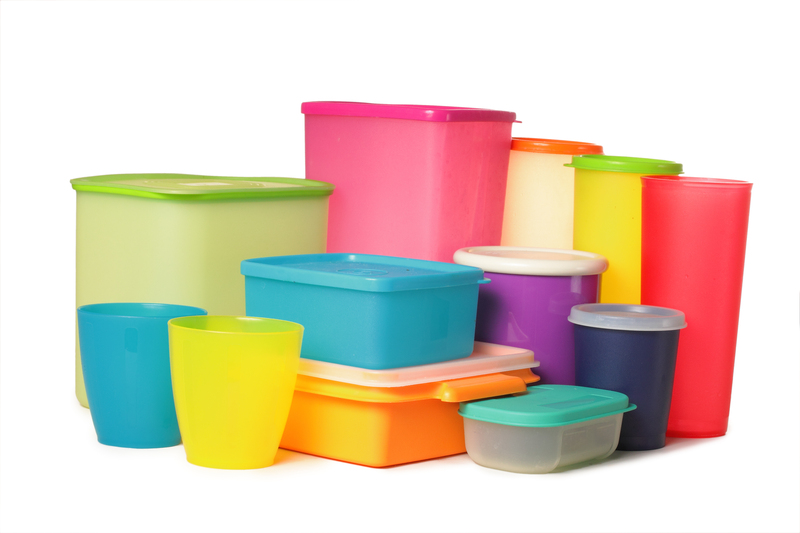Are You Aware of What Constitutes Hazardous Waste?
In our modern world, awareness about environmental issues is rapidly gaining momentum. Among these pressing matters lies the crucial topic of hazardous waste. But are you really aware of what constitutes hazardous waste? Whether you are a homeowner, small business owner, or simply someone concerned about the health of our planet, understanding the classification, sources, and safe handling of hazardous materials is essential. This article will delve deep into the topic, providing comprehensive, well-researched, and SEO optimized information to guide you through the maze of hazardous waste identification and management.

Defining Hazardous Waste: More Than Just Trash
When most people think of waste, they envision garbage bags or piles of rubbish destined for a landfill. Hazardous waste is a different beast entirely. It refers to waste materials that have properties making them potentially dangerous or harmful to human health or the environment. Not only can these wastes cause immediate problems, but many also have long-term or even irreversible effects.
- Hazardous waste is regulated by agencies such as the Environmental Protection Agency (EPA) to minimize risks.
- It can be generated by various sectors, including industry, healthcare, households, and agriculture.
- Improper handling or disposal can result in environmental contamination, health risks, and legal consequences.
Common Traits of Hazardous Waste
The determination of whether something is hazardous waste involves more than a superficial glance. Regulatory bodies use strict criteria to decide what materials fall under this banner. Let's break down the common identifying characteristics of hazardous waste.
- Toxicity: If a substance can cause adverse health effects--such as cancer, birth defects, or acute poisoning--it's considered toxic.
- Ignitability: Wastes that easily catch fire (e.g., solvents, oils) are deemed ignitable.
- Corrosivity: Wastes that can corrode metals or burn skin, like strong acids or bases, are classified as corrosive.
- Reactivity: Unstable wastes that can cause explosions or release toxic gases under certain conditions fall into this category.
Highlighting these traits helps define what constitutes hazardous waste and underscores why such materials must be handled with care.
Types of Hazardous Waste: A Closer Look
Hazardous waste comes in many forms, not limited to bubbling chemical concoctions in laboratories. To be truly aware of what is classified as hazardous waste, it's important to explore the various types and sources.
1. Industrial Hazardous Waste
Industries such as manufacturing, mining, and chemical processing are huge producers of hazardous waste. Their waste streams often include:
- Solvents and degreasers
- Heavy metals (lead, mercury, cadmium, arsenic)
- Synthetic chemicals such as polychlorinated biphenyls (PCBs)
- Acids and alkaline substances
- Paints, dyes, and varnishes
2. Medical and Pharmaceutical Waste
Hospitals, clinics, and laboratories generate specific hazardous waste, including:
- Expired or unused medicines and pharmaceuticals
- Sharps (needles, scalpels)
- Pathological waste (tissues, blood samples)
- Chemotherapy chemicals
- Disinfectants and sterilants
3. Household Hazardous Waste
You don't have to work in an industrial plant to come across hazardous waste. Everyday products used at home can be classified as hazardous:
- Cleaning agents and bleach
- Pesticides and herbicides
- Batteries (especially those containing lead, mercury, or cadmium)
- Paints, varnishes, and solvents
- Electronic waste (e-waste) containing toxic elements
- Light bulbs (CFLs and some LEDs)
- Automotive fluids (antifreeze, brake fluid)
4. Agricultural Hazardous Waste
Farms and agricultural operations often generate their own category of hazardous waste, such as:
- Pesticide containers and residues
- Fertilizer runoff
- Veterinary pharmaceuticals
- Animal waste with antibiotics
5. Electronic Hazardous Waste (E-Waste)
As technology advances at a rapid pace, obsolete electronic devices are thrown away, creating e-waste. E-waste contains hazardous substances like:
- Lead in cathode ray tubes and solder
- Mercury in switches and flat screens
- Cadmium in batteries and circuit boards
- Brominated flame retardants
Hazardous Waste: Laws, Regulation, and Classification
A key aspect of understanding what constitutes hazardous waste is knowledge of legal and regulatory frameworks. In the United States, the Resource Conservation and Recovery Act (RCRA) gives the EPA authority to oversee the management of hazardous waste. The EPA has set forth a comprehensive list that categorizes wastes as hazardous if they meet certain parameters.
- Listed wastes: These appear specifically on the EPA's lists (F-list, K-list, P-list, U-list) of hazardous waste.
- Characteristic wastes: Even if not listed, waste showing one or more hazardous traits (ignitability, corrosivity, reactivity, toxicity) is regulated.
- Universal waste: This special category covers items like batteries, pesticides, and fluorescent bulbs that are widely produced and hazardous.
- Mixed waste: Waste exhibiting both radioactive and hazardous waste characteristics.
It's important for companies and individuals to review local regulations, as state and municipal laws may set stricter standards.
Globally Recognized Hazard Symbols
Globally, the identification of hazardous waste involves standardized symbols and labeling. For instance, the Globally Harmonized System (GHS) features distinctive hazard pictograms to signal danger:
- Flame (for flammables)
- Skull and crossbones (for toxins/poisons)
- Corrosion (for acids/bases)
- Exclamation mark (for irritants)
- Environment (for aquatic toxicity)
Environmental and Human Health Risks
Improper handling and disposal of hazardous waste can have catastrophic outcomes. Here are just some of the risks associated with hazardous waste:
- Soil contamination: Leaking hazardous chemicals can render large areas of land unusable for agriculture or habitation.
- Water pollution: Hazardous waste that seeps into groundwater or rivers can poison drinking water supplies and aquatic life.
- Air pollution: Incineration or evaporation of toxic substances can release harmful fumes into the atmosphere, causing respiratory and neurological problems.
- Bioaccumulation: Some chemicals, like mercury and PCBs, accumulate in the food chain, ultimately affecting human consumers.
- Occupational hazards: Workers exposed to hazardous waste risk acute injuries, chronic illnesses, or fatal conditions.
Safe Disposal and Management of Hazardous Waste
Understanding what makes waste hazardous is only half the battle--proper management and disposal is critical to safeguard our health and ecosystems. Here are the best practices and options for handling hazardous waste responsibly:
Segregation and Labeling
Always separate hazardous materials from regular waste streams and ensure containers are clearly labeled. Never mix different types of hazardous waste since that can trigger dangerous chemical reactions.
Use of Approved Containers
Special containers made of non-reactive materials are essential. For example, acids should be stored in glass or polyethylene containers, while solvents might require metal drums.
Certified Collection and Disposal Services
Many municipalities offer household hazardous waste collection days. For businesses, only use federally and state-approved hazardous waste haulers and processors.
Recycling and Recovery
Some types of hazardous waste--like solvents, batteries, and electronic devices--can be recycled or have valuable components recovered, reducing the environmental footprint.
Public Education and Awareness
As the saying goes, knowledge is power. Local governments and organizations often hold awareness campaigns to educate people about the importance of correct hazardous waste identification and handling.
Common Misconceptions About Hazardous Waste
There are many myths regarding hazardous waste. Here, let's debunk a few:
- Myth: "If it's sold in stores, it can't be hazardous."
Fact: Many household products (bleach, drain cleaners, paint thinners) are hazardous if not used or disposed of properly. - Myth: "Small quantities don't matter."
Fact: Even minute amounts of mercury or PCBs can cause extensive environmental harm. - Myth: "Diluting chemicals makes them safe."
Fact: Diluting may reduce immediate danger, but toxic substances remain in the environment and can still cause damage over time. - Myth: "Hazardous waste is only an issue for big factories."
Fact: Households can be significant contributors, especially when hazardous products are disposed of down drains or in regular trash bins.

How to Tell If Your Waste Is Hazardous
Still wondering how to tell if your waste is hazardous? Here are some practical steps:
- Check the product label: Look for signal words (danger, warning, caution) or symbols (skull & crossbones, flame, corrosive).
- Review the Safety Data Sheet (SDS): For commercial products, the SDS details hazards, storage, and disposal instructions.
- Consult local guidelines: Your local waste management authority can clarify what is considered hazardous in your area.
- Use EPA resources: The EPA website offers a Hazardous Waste Identification guide and compliance assistance.
Conclusion: Why Awareness Matters
In summary, hazardous waste constitutes any material that can pose a severe threat to health or the environment due to its toxic, corrosive, ignitable, or reactive nature. From industrial chemicals to household cleaners, recognition and understanding of such materials play a vital role in effective, safe, and legal waste handling.
By staying informed about what constitutes hazardous waste and adhering to best practices for disposal and management, you play a crucial part in reducing the risks to yourself, your community, and future generations. Environmental awareness and responsible action start with us all.
Key Takeaways
- Hazardous waste includes a wide range of materials from industrial chemicals to everyday household items.
- Proper identification, handling, and disposal practices are critical.
- Refer to product labels, SDS, and regulatory guides to assess if your waste is hazardous.
- Choose certified collection services for safe disposal; never mix hazardous waste with regular trash.
- Spread awareness and encourage others to learn about hazardous waste management.
Remember: The next time you reach for a bottle of bleach or decide to discard an old smartphone, consider whether it might qualify as hazardous waste. Your actions matter--be aware, be responsible, and help protect our planet!